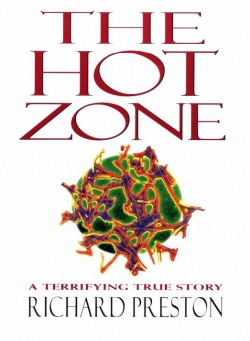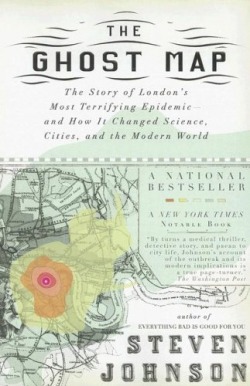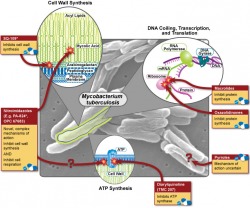The Office of Public Health Practice hosted their annual symposium on Wednesday, and the theme was "Can the World be TB Free"? I only had a chance to attend one of the talks (by Dr. Joseph McCormick), which dealt with the rising problem of multi-drug resistant tuberculosis (MDR-TB) and how our treatment strategies of TB may have helped this new disease to emerge. In what is sadly a familiar story for many bacterial diseases, the discovery of streptomycin (the first antibiotic that was effective against TB) was hailed as the first step in the elimination of the disease, but as time as passed the drug has become less and less effective, forcing us to search for new treatments. In the wake of the HIV/AIDS epidemic, TB has exploded and the growing problem of antibiotic resistance makes treating these people very difficult. So why does drug resistance happen, and how is it our fault? There are about 10 million (or 10^7 if you're feeling scientific) individual tuberculosis bacteria living in each cavity. About one bacteria out of every 10-100 million will randomly develop a mutation that confers resistance to any one of the two major first line drugs, rifampin and isonazid. These mutations are quite rare, but given that bacteria are nothing if not effective reproducers, it is safe to assume that approximately one bacterium per cavity is resistant to rifampin, and that another is resistant to isonazid. This situation may not sound all that bad, but consider what would happen if the patient were to be treated with rifampin alone - every single bacterium would die except for the one that had developed resistance. This bacterium is now presented with perfect growth conditions - no competition and lots of food - so it begins to multiply, and after a few days have passed, 10 million bacteria live in the cavity again - but this time all of them are resistant to rifampin. Given the large number of bacteria involved, it's now reasonable to expect that one of these resistant bacteria will then develop a resistance to isonazid, and following another single-drug treatment cycle, MDR-TB is born.
4 Comments
I have a confession: for a long time, I was pretty unclear on what public health, much less epidemiology, actually was. Given the state of public health in the media (you only hear about it when something goes horribly wrong...), it's not all that surprising. However, we have public health to thank for many of the things that we currently take for granted - like the idea that smoking is dangerous and the elimination of many once-dreaded childhood diseases like measles and polio. My interest in the field of public health in general, and epidemiology in particular, began when I read Richard Preston's The Hot Zone and I continued to be inspired by popular accounts of how epidemiology interacts with modern life in very hidden ways.  If you think that you might have even a passing interest in public health, I encourage you to check out the two books above. They each highlight why epidemiology is such a fascinating field, but they approach it from two different directions. My favorite of the two is The Hot Zone, which follows the US Army's attempt to contain an Ebolavirus outbreak (yes, that Ebola) in Reston, VA (yes, the one next to Washington D.C.). The book has some fairly surreal scenes - like an army clean-up unit staring at a busy playground while the suit up to enter an infected monkey house in secrecy - and it may or may not have contributed to a slightly romanticized view of what epidemiologists actually do (sadly, so far we've not been mobilized to contain any outbreaks and I've not had to run tests on infected monkeys). But the book does highlight the extraordinary level of surveillance that our public health officials must maintain and the variety of situations that they need to be prepared to handle.  Stephen Johnson's The Ghost Map takes a different approach to public health - how it can be used to clean up after a disaster. In the mid-19th Century, people began flocking from the countryside to the city, creating the lifestyle that most of us now take for granted. The population of most major urban centers exploded, and to borrow a phrase from Johnson, London was "... a Victorian city with an Elizabethan infrastructure." The recent conquest of India brought a different kind of immigrant to England's capital - Vibrio cholerae, a nasty bacterial species that causes cholera, which produced extremely severe diarrhea. From 1853-54, a cholera outbreak killed 10,000 people in London, and The Ghost Map tracks how the cause of this disease was discovered and how the later public health improvements helped create what we think of as modern urban infrastructure. Both books are great reads, especially if you think you might be interested in this thing called "public health" - and yet they only scratch the surface of one aspect of one part of one discipline of the whole. There's lots more good books out there - The Coming Plague comes to mind, and I'm sure that some of you may have suggestions of your own.
Forget cockroaches. Bacteria will be the only organisms left if we manage to launch a warhead too many or if any doomsday scenarios actually occur. It's a good thing - without bacteria we wouldn't be alive. Bacteria control nutrient cycles and help us make cheese, but they can also kill us (it should be noted that pathogenic bacteria make up a minuscule portion of the known bacteria). Their astounding diversity has allowed them to become the earth's dominant life form. New research from Mitchell et al. (Nature, July 2009) seems to indicate that higher animals (i.e., those of us lucky enough to have a central nervous system) aren't the only ones able to prepare for the future based on current environmental conditions - bacteria (E. coli) and yeast (S. cerevisiae) can do it too. While it seems odd, the basic principle has been recognized for years. Indeed, the lac operon in E. coli activates the genes needed to digest the sugar lactose, but the lac operon is activated only by lactose. This mechanism makes good sense from an evolutionary perspective - proteins are expensive to produce, and if the cell does not need them (i.e. there is no lactose to digest) then producing them is wasteful. While direct links like this one are easy to uncover, more subtle ones have remained a mystery - until now. Bacteria are everywhere. It's estimated that there are over 100 trillion (with a t) individual bacteria living in the average humans digestive tract. While it sounds fairly disgusting (unless, of course, you're a microbiologist), their presence is actually a Good Thing - these bacteria help us to break down and digest foods that we would normally not be able to eat on our own. However, sometimes this symbiosis has some unintended consequences, as this wonderful paper in PLoS ONE shows. |
Somewhere Else

 RSS Feed
RSS Feed